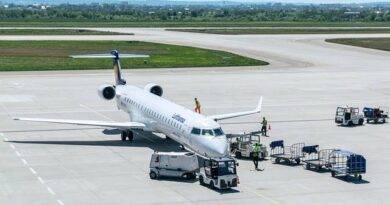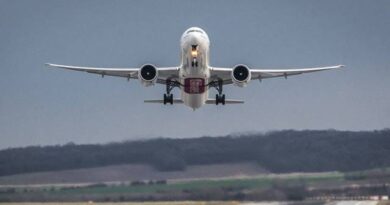What Is an Emergency Landing?
An emergency landing is a situation where a pilot is forced to land the aircraft unexpectedly due to critical circumstances. It is a crucial aviation procedure used to avoid potential danger when the plane cannot continue its journey under normal conditions. While some emergency landings are controlled and planned with the assistance of Air Traffic Control (ATC), others are rapid and unplanned.
The 3 most common types of emergency landings are:
- Precautionary landing: The pilot detects a potential issue and lands to avoid further risk.
- Forced landing: The aircraft cannot remain airborne due to a serious mechanical issue, such as engine failure, and the pilot is forced to land immediately.
- Ditching: A forced landing on water, typically used when no suitable land areas are available for a safe landing.
The Hudson Miracle: A Notable Emergency Landing
The “Hudson Miracle” refers to US Airways Flight 1549, which made an emergency landing on the Hudson River on January 15, 2009. After a bird strike caused both engines to fail, Captain Chesley “Sully” Sullenberger skillfully executed a water landing, saving all 155 people onboard. Despite losing power just minutes after takeoff, his quick thinking and exceptional piloting avoided disaster, making this one of the most famous and successful emergency landings in aviation history.
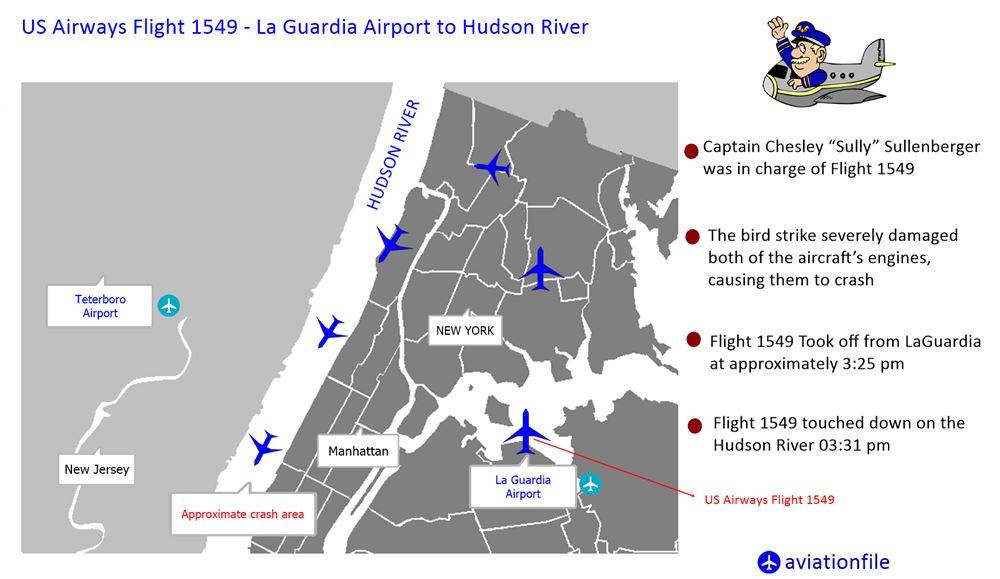
Situations That May Lead to an Emergency Landing
Emergency landings can result from various situations, some of which are more common in aviation. The goal is always to prioritize passenger safety by getting the aircraft on the ground as quickly and safely as possible.
- Engine Failure or Malfunction: Engine failure is one of the most severe reasons for an emergency landing. Modern aircraft are designed to continue flying with one engine in the case of a twin-engine plane. However, a full engine failure or malfunction that affects multiple systems usually necessitates an immediate landing. Technical failures can include fuel system malfunctions, oil leaks, or engine fires.
- Fire or Smoke in the Cabin: Any sign of fire or smoke in the cabin is an urgent cause for concern. Fires can result from electrical failures, cargo issues, or fuel system leaks. Due to the confined space of an aircraft cabin, fires can spread quickly and pose a threat to passengers and crew.
- Medical Emergencies: Medical emergencies, such as heart attacks or other life-threatening conditions involving passengers or crew members, often prompt an emergency landing. The decision to divert the aircraft depends on the severity of the condition and the distance to the nearest suitable airport.
- Loss of Cabin Pressure: A sudden loss of cabin pressure can be catastrophic if not addressed promptly. Pilots will descend to a lower altitude and may perform an emergency landing to ensure the safety of those onboard. Pressurization issues can arise from structural damage to the aircraft or failure of the pressurization system.
- Weather Conditions: Severe weather, such as extreme turbulence, hurricanes, or thunderstorms, can force an emergency landing. If the weather becomes too dangerous to fly through, pilots may divert the aircraft to avoid putting the passengers and crew at risk.
- Security Threats: Security threats, such as hijacking attempts or other illegal activities, are handled with extreme caution by both the flight crew and ATC. Pilots may initiate an emergency landing to mitigate the danger and allow authorities to intervene.
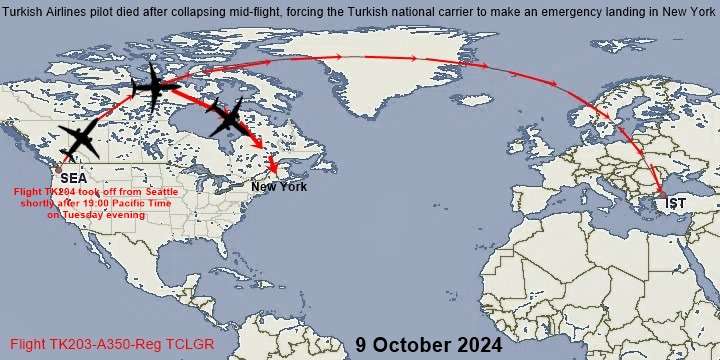
Risks Associated with Emergency Landings
While emergency landings are meant to mitigate risk, they do come with their own set of hazards. These risks depend on the nature of the emergency, the location of the landing, and the aircraft’s condition.
- Damage to the Aircraft: An emergency landing, particularly one made in challenging conditions, increases the likelihood of damage to the plane. This is particularly true during a forced landing or ditching, where the terrain or water can cause significant structural damage upon impact.
- Passenger and Crew Injuries: Even with safety protocols, there is always the risk of injuries during an emergency landing. Sudden descent or rough landings can lead to injuries caused by turbulence or impact. Although rare, there are instances where passengers or crew members have been seriously hurt in these situations.
- Difficult Terrain: If a pilot is forced to land in an area without an airport, such as a rural area, forest, or body of water, the risks increase. Limited resources and unpredictable surfaces make such landings much more dangerous.
- Delayed Rescue or Emergency Response: Emergency landings made in remote or difficult-to-access locations may delay the arrival of rescue teams, emergency services, or medical assistance, further increasing the risks for those involved.
Precautions Taken in the Air
- Pilot Training and Expertise: Pilots undergo extensive training to handle emergency scenarios, including forced landings, fires, engine failures, and security threats. They are trained to remain calm, assess the situation, and communicate effectively with ATC.
- Air Traffic Control (ATC) Coordination: One of the most critical steps in any emergency landing is clear communication with ATC. Controllers provide guidance, ensuring that the emergency aircraft is given priority and directing it to the nearest suitable airport. ATC helps clear the flight path, providing the pilot with essential information about available runways and weather conditions(Skybrary).
- Passenger Safety Briefings: In the event of an emergency, flight attendants are responsible for briefing passengers on the necessary safety procedures, including how to brace for impact, use oxygen masks, and locate exits. These briefings are critical in minimizing injury during an emergency landing.
- Emergency Equipment Onboard: Modern aircraft are equipped with a range of emergency systems to assist in the event of a landing. These include oxygen masks, life vests, emergency slides, and advanced fire suppression systems.
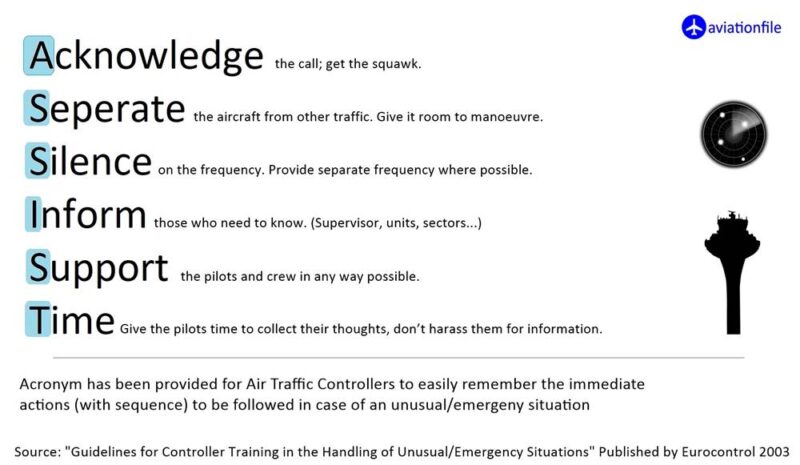
Ground-Based Precautions
- Runway Preparation: When an emergency landing is declared, ground crews at the airport prepare the runway for the aircraft. This often involves clearing other traffic, deploying emergency vehicles, and ensuring that fire and rescue teams are standing by.
- Emergency Response Teams: Firefighters, paramedics, and airport security teams are often on standby for emergency landings. These teams are trained to respond quickly to aircraft emergencies, providing immediate medical care, fire suppression, and assistance in evacuating the plane if necessary.
- Evacuation Procedures: If an emergency landing leads to a fire or other dangerous situation, rapid evacuation becomes essential. Emergency slides are deployed, and flight attendants coordinate passenger exit to ensure everyone leaves the aircraft safely and quickly.
- Post-Landing Inspections: After an emergency landing, the aircraft undergoes detailed inspections by aviation authorities to assess damage and determine the cause of the emergency. This ensures that any underlying issues are addressed before the aircraft can return to service.
Conclusion
Emergency landings, while rare, are a vital aspect of aviation safety. They are necessary when critical situations arise, ranging from mechanical failures to medical crises. Both pilots and ATC play essential roles in ensuring that emergency landings are conducted safely. Thanks to modern aviation technology, thorough pilot training, and coordinated ground efforts, the risks associated with emergency landings are significantly mitigated. However, passengers should always remain attentive to safety briefings and follow crew instructions to ensure the best possible outcome in the event of an emergency.
Understanding the causes, risks, and safety measures of emergency landings helps passengers feel more secure. Aviation professionals are trained to manage these situations with precision and care. This knowledge reassures passengers during such events.
